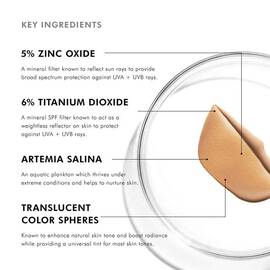INJECTABLES: NEUROTOXINS
FIND THIS TREATMENT AT A SKINCEUTICALS FLAGSHIP NEAR YOU >INJECTABLE TREATMENTS TO SMOOTH AND SOFTEN WRINKLES
Neurotoxins such as Botox®, Dysport® and Xeomin® are injected into the skin in minute amounts to temporarily relax facial muscles. They are primarily used to reduce or diminish facial wrinkles and creases. Neurotoxins can also serve as a treatment for neck or eye spasms, excessive sweating, and even overactive bladder.
FAQS
WHAT ARE NEUROTOXINS?
Dermal fillers can diminish or even eradicate the appearance of creases in the skin by literally filling in the furrow or fold in the skin, making them a wonderful solution for static wrinkles. However, if a wrinkle is due to dynamic muscle movement, a filler alone cannot eradicate it. For these wrinkles a neurotoxin is the only method that will work.
Recognized as one of the most popular cosmetic procedures in the market, neurotoxins such as Botox®, are used to address dynamic wrinkles, the wrinkles and creases that result from repeated facial expressions and movements. During a treatment, neurotoxins are injected into the muscle to relax overactive, wrinkle-causing muscles. As a result, facial expressions soften and wrinkles are smoothed or diminished. Neurotoxins are most commonly used to treat forehead creases, crow’s feet, and frown lines.
he discovery of using neurotoxins to freeze facial muscles for cosmetic results is credited to Alastair and Jean Carruthers in the 1980s. Jean, an eye doctor, used botulin toxin in small amounts to treat blepharospasm, an uncontrollable blinking and spasming of the eye. Her patients were delighted to discover that a side-effect of the treatment included the disappearance of long-standing wrinkles.
Today, there are three primary neurotoxins available: Botox®, Dysport® and Xeomin®. All three contain the same active toxin, botulinum. The difference between the three lies in the formulation. Consult your skincare professional to determine which neurotoxins are right for you and to develop an advanced homecare regimen that helps maintain and protect results.
WHO ARE NEUROTOXINS FOR?
Neurotoxins have traditionally been used as an anti-aging procedure. A few years ago, the most popular age to begin neurotoxins was the mid-to-late 40s. Today, they are a popular addition to the skincare regimens of patients in their 20s. When and where to begin is a discussion to have with an experienced and trusted dermatologist or plastic surgeon who can accurately assess your skin and describe the results that can be achieved with neurotoxin injections.
Neurotoxin injections are not for everyone. They are not recommended for women who are pregnant or breastfeeding or for individuals with certain health conditions. If you are considering injectable neurotoxins, it is extremely important to consult with a skincare professional with a proven background in cosmetic medicine, substantial training, and experience administering botulinum toxin injections.
HOW DO NEUROTOXINS WORK?
Facial lines fall into two general areas; dynamic and static. Static wrinkles are the fine-to- medium-depth lines that are always visible on the face, even if completely at rest. These wrinkles are caused in part by repeated inflammation induced by free radical damage from environmental aggressors or by repeated habits such as sleeping position. Dynamic wrinkles, on the other hand, are directly related to how your facial muscles move and manipulate the face.
Neurotoxins are proteins that are injected into the muscle to relax overactive, wrinkle-causing muscles. They work by blocking signals sent by the nerves to the muscles responsible for contractions. Once the signal is blocked, the muscle cannot respond, which will soften and relax the wrinkle associated with the movement. In other words, a neurotoxin “freezes” facial muscles, erasing wrinkles completely or preventing them from deepening.
WHAT WILL I EXPERIENCE WHEN RECEIVING NEUROTOXINS?
Neurotoxins are injected directly into targeted muscle areas using a fine-gauge needle. While the procedure is minimally invasive, it is not entirely pain free. Many compare the sensation to facial waxing. After the injections, small dots of blood are visible at the entry sites, but usually disappear within a few hours. It is not uncommon to experience some bruising, redness and/or swelling at the injection sites as well.
It is important that the treated area is not manipulated in any way for at least four hours or longer post-procedure. Doing so can move the neurotoxin, which may transfer the effect to an area it is not wanted. The amount of time that it takes for the toxin to begin “freezing” the muscle depends on the formulation, the amount injected, and how quickly the toxin spreads in a particular patient. Results are generally seen within 7 days.
WHEN SHOULD I GET NEUROTOXINS?
Neurotoxin injectables do not cause any sun sensitivity, making the procedure suitable for any time of the year. It is generally recommended that patients skip any exercise routine on the same day as injection and avoid lying down for at least 4 hours afterwards to ensure that the toxin settles evenly. It’s also a good idea to avoid any blood-thinners such as alcohol or aspirin for a couple of days pre and post-treatment. Please discuss with your health care provider if you are currently on blood-thinning medication before treatment. How long the neurotoxin lasts depend on the amount used and how quickly your body metabolizes the toxin. Many users report an “active” period of 3-4 months.
WHERE SHOULD I GET IT?
While neurotoxins are a non-surgical cosmetic procedure, they require very specific training, education, and skill. To avoid unexpected side effects or complications, they should only be administered in a medical setting by a licensed skincare professional. In particular, dermatologists or cosmetic surgeons may have more expertise with facial anatomy and muscle placement. When selecting a provider, it is important to look for a physician with significant training, experience, and a proven track record in performing the treatment. Before and after photos of previous patients are another great way to assess the quality of treatment.
SHOULD I INCORPORATE AN AT-HOME SKINCARE REGIMEN?
It is recommended to incorporate an at-home skincare regimen after neurotoxins; always consult with your physician for individual at-home advice.
PRODUCTS RELATED




